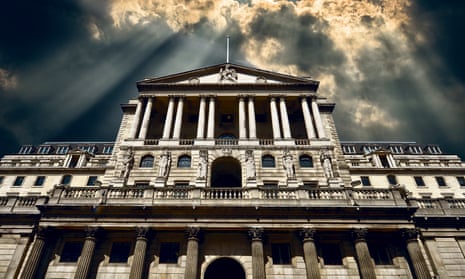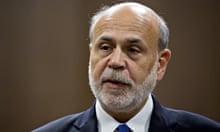The UK’s largest banks are strong enough to weather a £125bn financial hit during a severe economic downturn, despite facing mounting stress from rising interest rates, the Bank of England said.
The central bank’s annual stress test of the country’s biggest lenders – which include NatWest, Barclays, HSBC, Lloyds, Standard Chartered, the UK arm of Santander, Nationwide building society and Virgin Money UK – determined that they would be able to continue lending to households and businesses even if conditions worsened.
While the Bank of England only tested interest rates rising to 6% – which is not far beyond current levels of 5% – the scenario also involved a deep recession where GDP contracts by 5%, unemployment doubles to 8.5%, and a housing crash in which prices fall by a third.
It also tested the banks’ ability to absorb soaring costs to cover misconduct, and an increase in energy prices that contributed to peak inflation levels of about 17% in the stress test scenario.
Overall, the UK’s largest lenders had to prove they could absorb an aggregate £125bn in impairment charges over a five-year period. However, the central bank’s financial policy committee confirmed lenders would have to slash staff bonuses and shareholder payouts to pull through.
“The financial policy committee judges it important for investors to be aware that banks would take such actions as necessary if such a stress were to materialise,” the report said.
Shares in UK banks rallied in morning trading on Wednesday after the results were released, with Lloyds up 2.8%, Barclays gaining 1.3% and NatWest and HSBC rising 1.5%.
“The Bank of England’s stress test results this morning, which state that the UK’s top banks would continue to be resilient in an economic environment much worse than today, are good news all round,” said Nisha Sanghani, a partner at Ashurst Risk Advisory.
“As evidenced by the recent banking crisis, social media and a 24/7 global economy mean that the pace and impact of stresses to banks is in a very different place compared to 15 years ago.”
The Bank of England has run annual stress tests on the UK banking sector since 2013, as part of its response to the 2007 financial crisis. The tests are meant to identify potential weaknesses in the banking system that could put financial stability at risk, and determine whether individual banks could keep lending to households and businesses despite the additional stress.
This year’s results were released six months later than normal, with the central bank having postponed the exercise in March to give lenders some breathing space as they grappled with financial disruptions caused by the war in Ukraine.
The Bank of England governor, Andrew Bailey, defended using an interest rate of 6% in the stress test – a level that the financial markets believe will be reached by December.
“While interest rates are higher today and therefore closer to those which we published in the scenario, and it’s higher than when we first outlined the scenario, the scenario is significantly more severe than today’s conditions,” Bailey said.
after newsletter promotion
“A very important point there is that it’s the combination of higher interest rates and simultaneous recessions around the world and in this country, and materially higher unemployment that makes the stress; it’s not one thing on its own.”
The Bank also released its financial stability report on Wednesday morning, which warned that parts of the global financial system remained vulnerable to potential stresses.
“The risks include a worsening economic outlook, continued high inflation, and geopolitical tensions,” the Bank said.
The report highlighted that a typical UK mortgage-holder whose fixed-rate deal ends in the second half of this year faces an average increase in monthly payments of about £220.
“UK households are facing challenges from increased living costs and higher interest rates. As fixed-rate mortgage deals expire and households renew their mortgages, the average cost of mortgage payments will continue to increase,” the Bank said.
The report added that the proportion of individual households facing the highest mortgage repayments was expected to increase but stay below previous highs.










